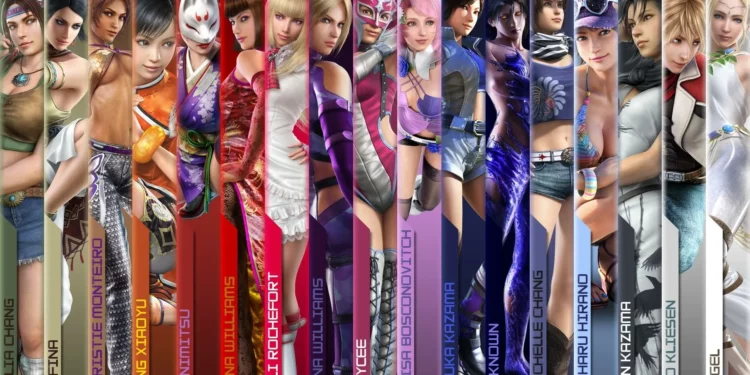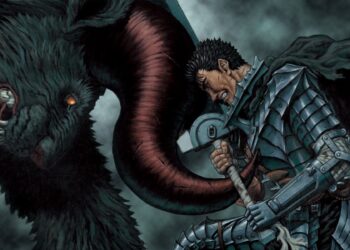Does Tekken Tag Tournament Have a Story Mode?
When you’re diving into a fighting game like Tekken, a story mode can really amp up the experience, right? It gives context to those epic battles and makes you care about the characters. But here’s the deal with Tekken Tag Tournament: it actually doesn’t have a traditional story mode. Being a non-canon game, it intentionally avoids a storyline.
Now, if you’re thinking about Tekken Tag Tournament 2, things get a little different. While it still doesn’t have a full-blown story mode like some other Tekken games, it does offer an “arcade battle” mode.
This “arcade battle” lets you fight your way through different stages, leading up to a final boss showdown. And the cool part? Beating that boss unlocks character-specific ending movies, which can be pretty cool to watch and add a bit of flavor to each fighter.
- Interestingly, there’s also a mode named “Fight Lab,” which serves as an offshoot story mode.
- In “Fight Lab,” you can get to know the characters better and even learn about their moves and combos.
It’s worth keeping in mind that the original Tekken Tag Tournament is strictly a non-canon game, so you won’t find any overarching storyline to follow.
On the other hand, Tekken Tag Tournament 2 spices things up a bit with some narrative depth. The conclusions you reach in this sequel can even have repercussions for its successor, Tekken 7.
So, in a nutshell, while Tekken Tag Tournament is all about the fighting action without a traditional storyline, Tekken Tag Tournament 2 adds some cool modes that give you a peek into the characters’ backgrounds.
Do you find that character backstories make your gaming sessions more engaging? It definitely can make those intense battles even more exciting!
Whether you’re smashing through battles or exploring “Fight Lab,” there’s a little something for everyone in this series!
Overview of Tekken Tag Tournament
Tekken Tag Tournament is a classic fighting game that was brought to us by Namco. It first hit the arcades in July 1999 and then made its way to the PlayStation 2 in 2000.
As a spin-off from the main Tekken series, it introduces a two-on-two tag team battle mechanic that really cranks up the gameplay.
Key Development Team
- Directors: Masahiro Kimoto, Katsuhiro Harada, Yuichi Yonemori.
- Producer: Yasuhiro Noguchi.
- Composers: Akitaka Tohyama, Yuu Miyake, Nobuyoshi Sano, Keiichi Okabe.
Gameplay Features
In Tekken Tag Tournament, you’re battling it out with teams of two characters, and you can switch between them using a tag button whenever you want.
Strategic tagging is super important here; if you lose just one character, it’s game over. You can even tag mid-combo or during special throws for some seriously cool moves!
The game features over 35 characters, mainly pulled from Tekken 2 and Tekken 3, along with a unique character named Unknown, who can mimic the fighting styles of other characters.
Game Modes
- 1-on-1 mode
- Team Battle (up to eight battles)
- “Tekken Bowl,” a super fun bowling mini-game
Character List
Fan-favorites that make a comeback include:
- Alex
- Angel
- Hwoarang
- Jin Kazama
- Yoshimitsu
- Paul Phoenix
- And tons more!
New additions to the game are Tetsujin, a metallic version of Mokujin, and Unknown as the final boss.
Development and Remaster
The PS2 version of Tekken Tag Tournament showed off upgraded graphics compared to the arcade version.
And if you’re into updated visuals, there’s an HD remaster called Tekken Tag Tournament HD, released in November 2011 for the PS3. It includes updated visuals and trophy support as part of Tekken Hybrid.
Reception and Sales
The PS2 version scored an impressive 85/100 on Metacritic, earning praise for its graphics and gameplay.
On the flip side, the PS3 remaster received mixed reviews, with a score of 65/100.
Sales-wise, the arcade version was a chart-topper as the highest-grossing arcade game in Japan for 2000, while the PS2 version sold over 400,000 units in just four days!
Notable Characteristics
Tekken Tag Tournament holds the spot as the fourth title in the Tekken series and stands out as a spin-off without a central story.
It really shines by featuring characters from previous Tekken games and emphasizing the beloved Tag mechanic.
And don’t forget, Unknown is a one-of-a-kind character who can mimic others while allowing character switches in matches.
The soundtrack and visuals are seriously impressive, especially considering it was a PS2 launch title!
Criticisms and Gameplay Dynamics
Some criticisms point to the game’s lack of innovation compared to Tekken 3.
Plus, some players felt the repetitive character endings and the absence of a cohesive storyline were drawbacks.
If you prefer solo play without the tag feature, there’s a solo mode just for you!
The Netsu rating system even shakes up gameplay, tweaking boosts based on character interactions—different relationships can lead to some interesting outcomes!
And let’s not forget the pure fun of bowling with any character in Tekken Bowl!
Absence of Traditional Story Mode in Tekken Tag Tournament
You might have picked up on the fact that Tekken Tag Tournament doesn’t include a traditional story mode. Instead, it puts all its focus on the gameplay mechanics.
One reason for this is that Tekken Tag Tournament is a spin-off from the main Tekken series. It brings together almost all the characters from previous games, but it puts the spotlight on a two-on-two ‘tag team’ battle mechanic.
Keep in mind that this title is considered non-canon, meaning it doesn’t follow an official storyline within the Tekken universe.
Comparing with Other Titles
On the flip side, Tekken Tag Tournament 2 does have a storyline, but it still doesn’t fit into the main series’ canon.
When you look at the bigger picture of the Tekken universe, games like Tekken 6 offer a story mode called Scenario Campaign, which you can find in the console versions.
Data & Tutorial Insights
Harada, the series producer, has shared some interesting data. He mentioned that not many players actually use the tutorial modes, comparing it to how people often skip reading manuals for new products.
For Tekken 7, there’s a story mode designed to help players learn gradually. This setup lets players pick up game mechanics naturally as they progress through the story.
The tutorial approach for Tekken 7 takes cues from the fight lab mode in Tekken Tag Tournament 2, encouraging a hands-on learning experience.
Player Engagement with Tutorials
Engagement levels with tutorials in the fighting game genre tend to hover around 50% or more, showing there’s real value in making tutorial features better.
Despite some criticism around Tekken 7, especially regarding its lack of significant tutorial efforts, players often find tutorial content scattered across platforms like YouTube.
So, while the original Tekken Tag Tournament doesn’t have a traditional narrative, it still delivers an engaging gameplay experience that captures the heart of the Tekken franchise.
Comparison of Tekken Tag Tournament’s Story Elements to Other Tekken Games
Tekken Tag Tournament (1997) is all about that player-versus-player action, where teams of two battle it out. It brings together characters from Tekken 3 and Tekken 2.
While Tekken Tag Tournament is mainly focused on gameplay, it doesn’t follow the overarching story of the series. Other Tekken titles dive deep into the narrative of the Mishima clan, exploring family drama like father vs. son and those intense intergenerational conflicts.
Chronological Context
The original Tekken introduces Kazuya, who’s out for revenge against his father, Heihachi, after being thrown down a mountain. This sets the stage for the family feud that we see in later games.
In Tekken 2, Kazuya becomes more corrupt while running his father’s business and ends up having his son Jin, continuing the generational saga. Tekken 3 features Jin seeking revenge against the beast Ogre and training under Heihachi.
Tekken 4 shows Heihachi trying to lure his long-lost son Kazuya to the tournament. Jin’s transformation in Tekken 6 is pretty significant—he uses the Mishima Zaibatsu to create chaos, showing a continuation of the family’s dark legacy.
Tekken 7 goes deeper into Heihachi’s backstory and their rocky relationship, adding even more complexity to the family dynamics.
Role in the Series
Unlike other mainline games that focus on the narrative, Tekken Tag Tournament 2 (2011) isn’t considered canon. Instead, it emphasizes character interactions and gameplay mechanics, though it does make references to stories from earlier games.
- Tekken Tag Tournament is a spin-off and doesn’t add to the main storyline.
- It brings in a two-on-two ‘tag team’ battle mechanic, which sets it apart from other titles.
- In Tekken Tag Tournament, you only need to empty one character’s health bar to end a fight.
Also, Tekken Tag games let players switch between two characters during battles and include almost every playable Tekken character up to that point. Mainline Tekken games give a narrative reason for the tournaments, while Tekken Tag Tournament lacks a story element, so there’s no narrative context or endings that explain the outcomes.
The game engine for Tekken Tag Tournament is similar to the one in Tekken 3, but with improved textures and more detailed character models.
Key Facts
- Tekken Tag Tournament focuses mainly on gameplay rather than narrative elements.
- Mainline Tekken games emphasize the narrative of the Mishima clan and the family dynamics.
- The original Tekken sets the stage for the family feud through the conflict between Kazuya and Heihachi.
- Later Tekken titles continue to build on the characters’ backstories and complex relationships.
While Tekken Tag Tournament 2 includes character interactions, it’s still regarded as non-canonical. The unique two-on-two battle mechanic makes Tekken Tag Tournament different from other games in the series. These mechanics allow for character switching and include almost all playable characters from previous games.
Player Feedback on Tekken Tag Tournament’s Lack of a Story Mode
Players have definitely voiced their disappointment about the absence of a story mode in Tekken Tag Tournament. They feel like the main story and character stories just don’t measure up.
Many think the main story is “pretty bad,” with only a few standout chapters. The character stories get criticism for being “dumb,” often showing one-dimensional conflicts.
The lack of endings in arcade mode is also called “pretty pointless” by players, who were hoping for more engaging content.
There’s a feeling that Tekken is missing some serious content compared to earlier versions. Players point out missing features like time attack, survival, and team battle.
It’s especially frustrating for players that there’s no tutorial or trials to teach combos, especially since Tekken is “one of the most complex fighting games.”
Comparisons with Street Fighter V
Some players have wondered why Tekken gets more leniency regarding its offline content when Street Fighter V faced similar backlash.
Many have said they wish Tekken had followed Street Fighter V’s release strategy, questioning whether the lack of a story mode justifies the long wait for the console version.
Unfortunately, Namco Bandai Games has completely scrapped the idea of including a story mode in Tekken Tag Tournament.
Players also point out the absence of fun modes from previous titles, like volleyball and bowling, which further diminishes the experience.
Difficulty & Accessibility Concerns
Reviewers have noted that the game’s increased difficulty frustrates newcomers and casual players. It seems the hardcore fanbase may have influenced developers to crank up the difficulty, leaving some players feeling overwhelmed.
This absence of a cohesive story mode disappoints many players, who see the lack of narrative depth as a significant drawback to the gaming experience.
Some players fondly remember the scenario campaign in Tekken 6, which offered more engaging story elements and rewards.
Many comments reflect a yearning for a more substantial story mode, especially after playing the focused narratives in Tekken 6 and 7.
Character Stories & Themes
It’s worth noting that character stories in Tekken Tag Tournament tend to lean towards simplistic themes, like “there’s a bear chasing me.” This contributes to the feeling of a thin narrative presence throughout the game.
Tekken Tag Tournament is fundamentally a non-canon game, so it intentionally lacks a storyline. Even in Tekken Tag Tournament HD, this absence stays consistent with the original release.
While some players didn’t enjoy earlier story modes—like the tedious third-person view in Tekken 6—their absence in this title leaves many feeling like they missed out.











